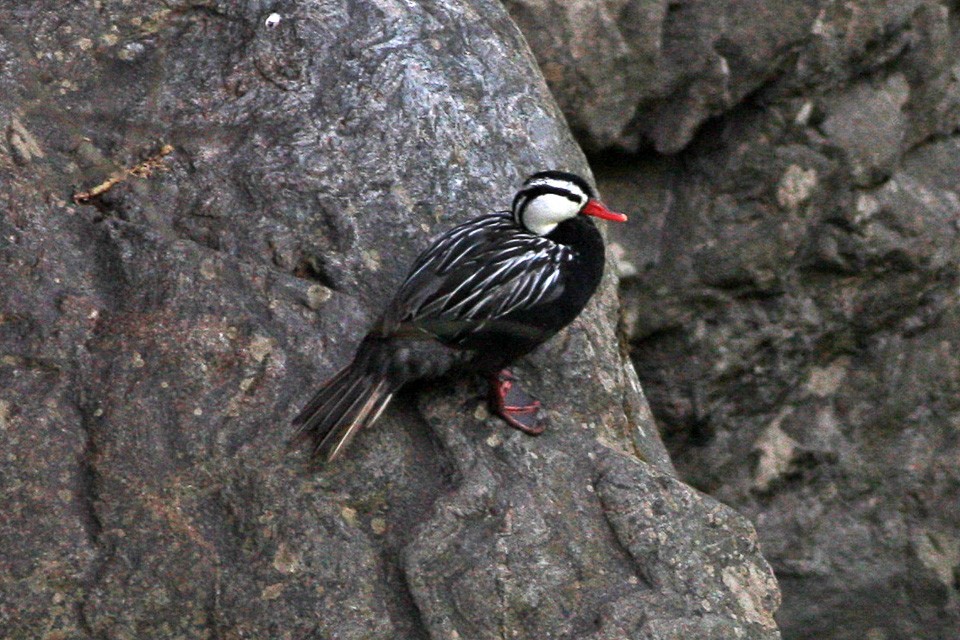Torrent Duck
A species of Torrent Duck Scientific name : Merganetta armata Genus : Torrent Duck
Torrent Duck, A species of Torrent Duck
Botanical name: Merganetta armata
Genus: Torrent Duck
Content
Description General Info
Description
The torrent duck (Merganetta armata) is a member of the duck, goose and swan family Anatidae. It is the only member of the genus Merganetta. It is placed in the shelduck subfamily Tadorninae after the "perching duck" assemblage where it was formerly assigned to was dissolved because it turned out to be paraphyletic. This 43–46-centimetre (17–18 in) long species is a resident breeder in the Andes of South America, nesting in small waterside caves and other sheltered spots. Like the blue duck, it holds territories on fast flowing mountain rivers, usually above 1,500 metres (4,900 ft). It is a powerful swimmer and diver even in white water, but is reluctant to fly more than short distances. It is not particularly wary when located. Male torrent ducks have a striking black and white head and neck pattern and a red bill. In flight they show dark wings with a green speculum. Females of all subspecies are somewhat smaller than the drakes; they have orange underparts and throat, with the head and upperparts grey and a yellower bill. Juveniles are pale grey above and whitish below. The male's call is a shrill whistle, while the female's is a throatier whistle. This is a declining species due to competition for its invertebrate food from introduced trout, pollution, forest destruction, and damming of mountain rivers for hydroelectric schemes. The Chilean population seems to be relatively stable, while the more northern ones are more seriously affected. However, the overall population is still large enough to warrant classification as a Species of Least Concern in the IUCN Redlist. 
Size
46 cm
Nest Placement
Cliff
Habitat
Torrent Duck primarily inhabit fast-flowing rivers with well-oxygenated waters that move over rocky substrata, which are essential for sustaining the insect larvae that constitute their main diet. The presence of large emergent rocks is crucial, as they create small falls and pools favored by torrent Duck for diving. They show a preference for river sections bordered by high river banks and narrowed riverbeds, which are characteristic features of their chosen habitat.
Dite type
Aquatic invertebrate eater
General Info
Feeding Habits
Bird food type
Species Status
Not globally threatened.
